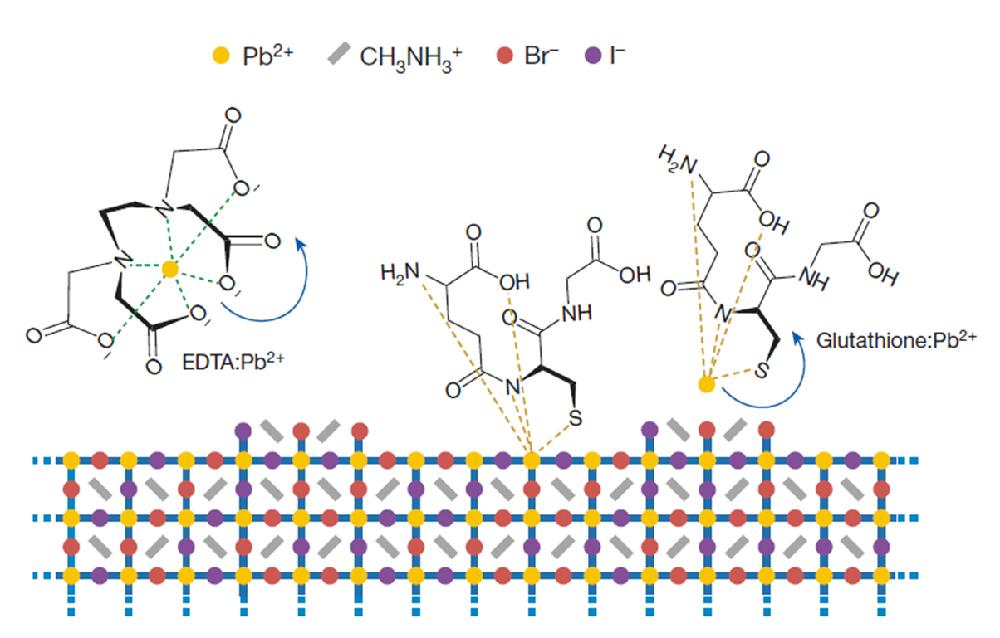Touching Tomorrow atPukyong National University
NEW BEGINNING, NEW INSPIRATION
Pukyong Today List
| Paper on |
|||
| WRITER | Department of External Cooperation | WRITE DAY | 2021-03-25 |
| COUNT | 262 | ||
| Paper on <Nature>, 'the world's top 3 scientific journal' | |||||
 |
Department of External Cooperation |  |
2021-03-25 |  |
262 |
'Nature' gave an eye to the research of next-generation display materials by PKNU professor
The research achievement of Prof. Lee Boram ... Presenting the result of improving the efficiency and stability of 'PeLED'
The National Research Foundation of Korea announced on March 11 that the paper 'Ligand-engineered bandgap stability in mixed-halide perovskite LEDs' by Professor Lee Bo-ram (Department of Physics) at Pukyong National University had been published in the international journal <Nature>.
This paper is attracting attention by presenting the result of greatly improving the luminous efficiency and color stability of the Perovskite Light-Emitting Device (PeLED), which is emerging as a next-generation display following the organic light-emitting device (OLED).
As a material with high color purity and easy color adjustment, the 'metal halide (organic-inorganic-halogen type compound) perovskite' luminous body, which has the conditions for ultra-high-definition display, is attracting attention, but in fact, securing color stability was a problem.
To obtain red and blue, two or more halides must be mixed, but they are easily separated by external stimuli which changes the luminous colors.
Prof. Lee has significantly improved the external quantum efficiency from 4.1% to 20.3% in this study conducted with international joint research teams at Oxford University in the UK, Cambridge University, the University of Oregon, and includes Pukyong National University and UNIST in Korea, it succeeded in developing red PeLED, which also secured high color stability.
Professor Lee's research team successfully removed defects in the nanocrystals by treating perovskite nanocrystals with two types of ligands (atoms or molecules bonded to the central atom in a coordination compound or complex compound) that chelate bonds to lead (Pb).
Perovskite nanocrystals from which surface defects were removed through ligand treatment showed 1.5 times higher luminous efficiency (photoluminescence quantum efficiency) than nanocrystals with surface defects, and when nanocrystals were applied to a light emitting elements, the external quantum efficiency was found to be greatly improved from 4.1% to 20.3%. In addition, the ligand-treated perovskite nanocrystalline light emitting display showed high color stability with a constant emission spectrum when the device was activated.
Professor Lee said, "Through this research, we expect that the commercialization of PeLED will be accelerated to enable more realistic colors and realistic expressions required in the increasingly developing VR and AR fields as well as in displays such as TVs."
Especially, local academia highly praised the fact that this research achievement was achieved in an international joint research environment which had become more difficult due to Corona 19, and that research led by a local university in Busan was published in one of the world's top 3 major scientific journals.
Professor Lee said, "Although the labs of overseas universities were closed due to Corona 19, and it was difficult for further experiments, it was resolved with active support from domestic researchers at places such as UNIST, Seoul National University, and Hanyang University. We were able to achieve good results by contacting overseas researchers through video meetings and conducting research."
Professor Lee, who was appointed as a professor of the Department of Physics at Pukyong National University in 2017, has published more than 40 SCI-level papers after his appointment. Among them, he has published articles such as <Nature (IF=(42.779)>, <Nano Energy (IF=16.602)>, <Journal of the American Chemical Society (IF=14.612)>, <Journal of Materials Chemistry A (IF=11.301)>, <ACS Nano (IF=14.588), lead author> as corresponding authors in eminent international journals. Currently, Professor Lee is actively conducting research activities with a total of 70 SCI papers related to research on optoelectronic devices such as light emitting displays and solar cells. He received a bachelor's degree from Ulsan University and a doctorate from UNIST.
He said, "Although physics is a basic science, in the end, I think that research enriches life, so I am working on applied research based on basic science. Since the manufacturing mechanism of a light-emitting device that converts energy into light and a solar cell that converts light into energy have similar manufacturing mechanisms, this research can be applied any number of ways to improve the performance of solar cells and transistors. In the future, we will continue to do our best on valuable research that can be used in real life."
Meanwhile, Professor Lee conducted his research with the support of the Basic Research (rising research) project from the National Research Foundation of Korea. Pukyong National University also plans to separately provide a reward fund in accordance with the award system for excellent papers. <Pukyong Today>

△ 페로브스카이트 표면 리간드 처리 모식도 
△ 리간드 처리하지 않은 소자와 리간드 처리한 소자의 전계 발광 파장 안정성 그래프